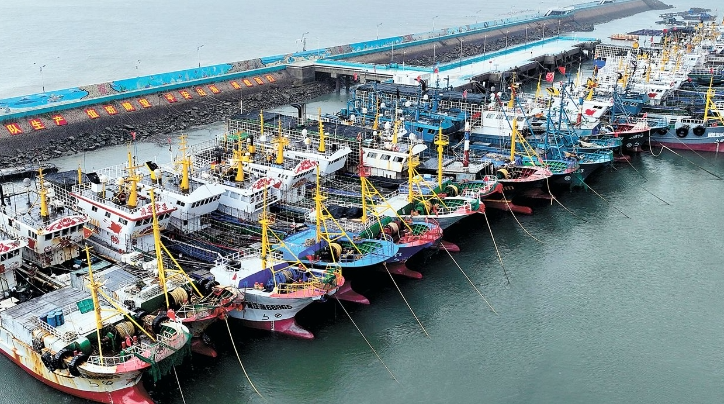Typhoon Gaemi, the third typhoon of the year, has made a significant impact on mainland China, prompting the Ministry of Transport to upgrade its emergency response to Level II, the country’s second-highest alert level. The storm, which was located 55 kilometers southeast of Pingtan, Fujian Province at 10 a.m. on Thursday, has led to widespread disruptions and evacuations across the region.
In anticipation of Typhoon Gaemi’s arrival, Fujian Province authorities have relocated 156,800 residents by 7 a.m. on Thursday. The National Meteorological Center renewed its red alert, indicating the severity of the approaching storm. The typhoon’s impact has been felt in various sectors, including transportation and maritime activities.
A total of 73 passenger ferry routes, including four cross-Strait routes, have suspended operations, affecting 203 passenger ferries. Additionally, 97 flights were canceled due to adverse weather conditions. Maritime operations have also been heavily impacted, with 92 marine projects halted, and construction vessels and personnel evacuated. Over 29,000 people working on fishing rafts along the coast have been brought ashore, and 733 fishing boats have taken shelter, with approximately 3,200 people evacuated.
Local maritime authorities in Fujian have issued over 2,000 maritime typhoon alerts, resulting in the evacuation of 1,334 vessels from affected areas and the relocation of more than 4,000 maritime personnel. The typhoon had earlier made landfall in eastern Taiwan’s Yilan County around midnight Thursday, causing two fatalities and injuring 201 individuals.
Typhoon Gaemi is expected to continue moving northwest at speeds of up to 15 km per hour, with landfall anticipated between Lianjiang and Xiuyu in Fujian Province later on Thursday. The storm is projected to move further inland, bringing heavy rains and strong winds to northern regions.
Photo Caption: Fishing boats take shelter from the approaching Typhoon Gaemi at a harbor in Lianjiang County, Fuzhou, Fujian, on Wednesday.

